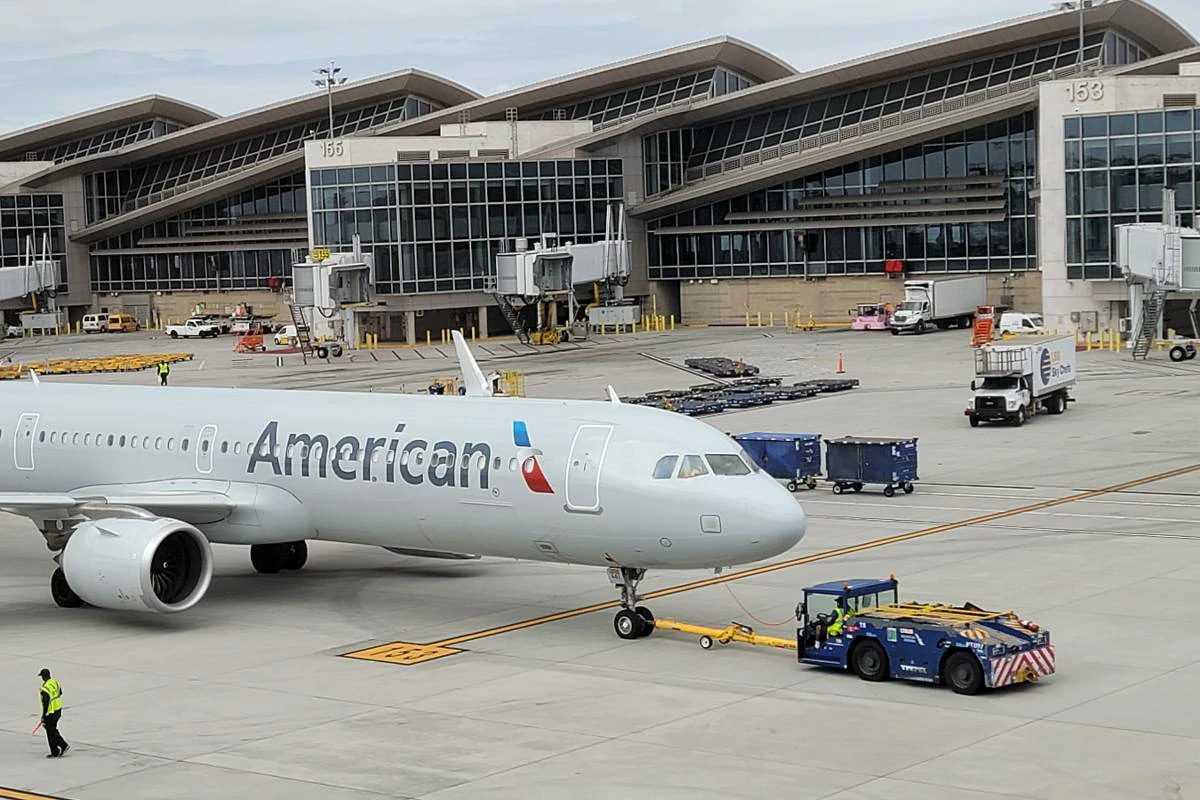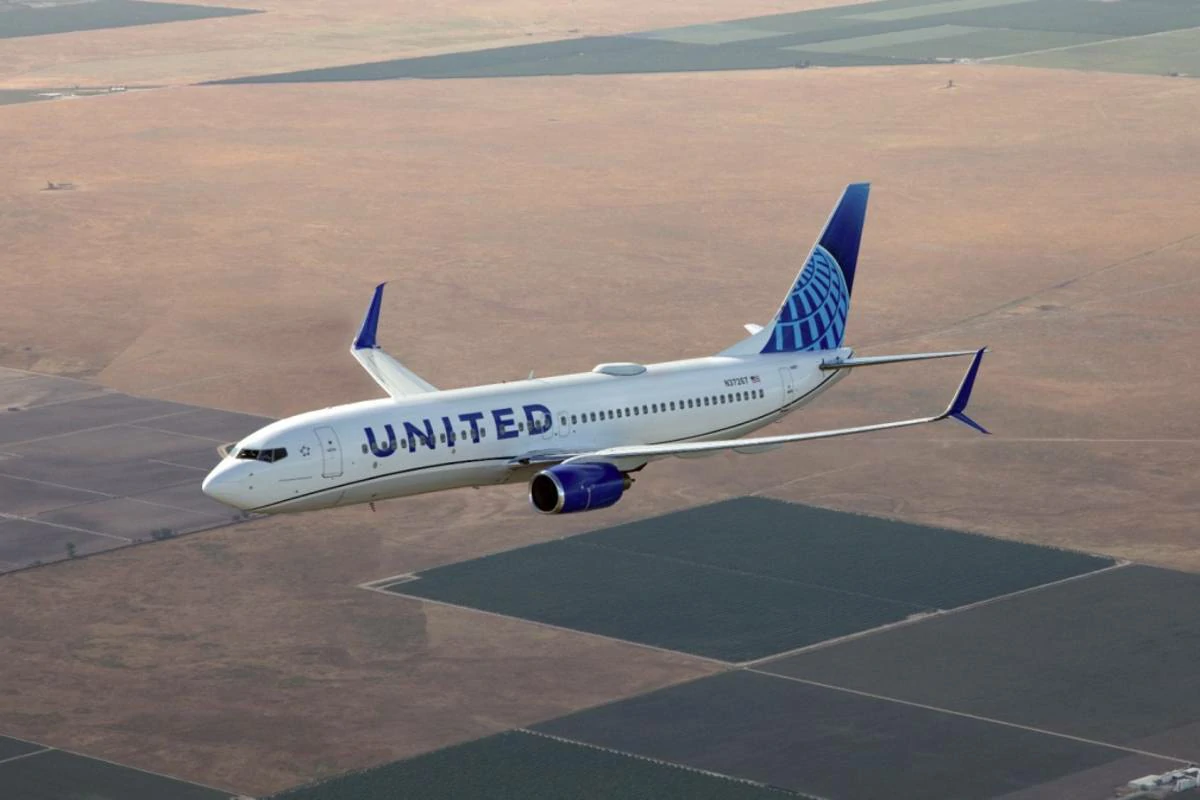What is Slab City, California really like? Answer is – Slab City, California is a unique, off-the-grid community located in the Sonoran Desert. It’s known for its lack of traditional infrastructure, attracting a diverse mix of people including snowbirds (retirees escaping cold winters), artists, survivalists, and those seeking an alternative lifestyle outside of mainstream society. Slab City offers freedom from rules and regulations, but also presents challenges like harsh desert conditions and limited resources.
Summary
- Slab City is a former WWII military base where only the concrete slabs remain.
- It’s a completely off-grid community with no running water, electricity, or formal services.
- Residents are a mix of individuals seeking freedom, alternative lifestyles, and those facing economic hardship.
- Slab City is known for its vibrant art scene, sense of community, and status as “the last free place in America.”
- Life in Slab City can be challenging due to extreme weather, lack of resources, and occasional safety concerns.
What is Slab City, California Really Like?
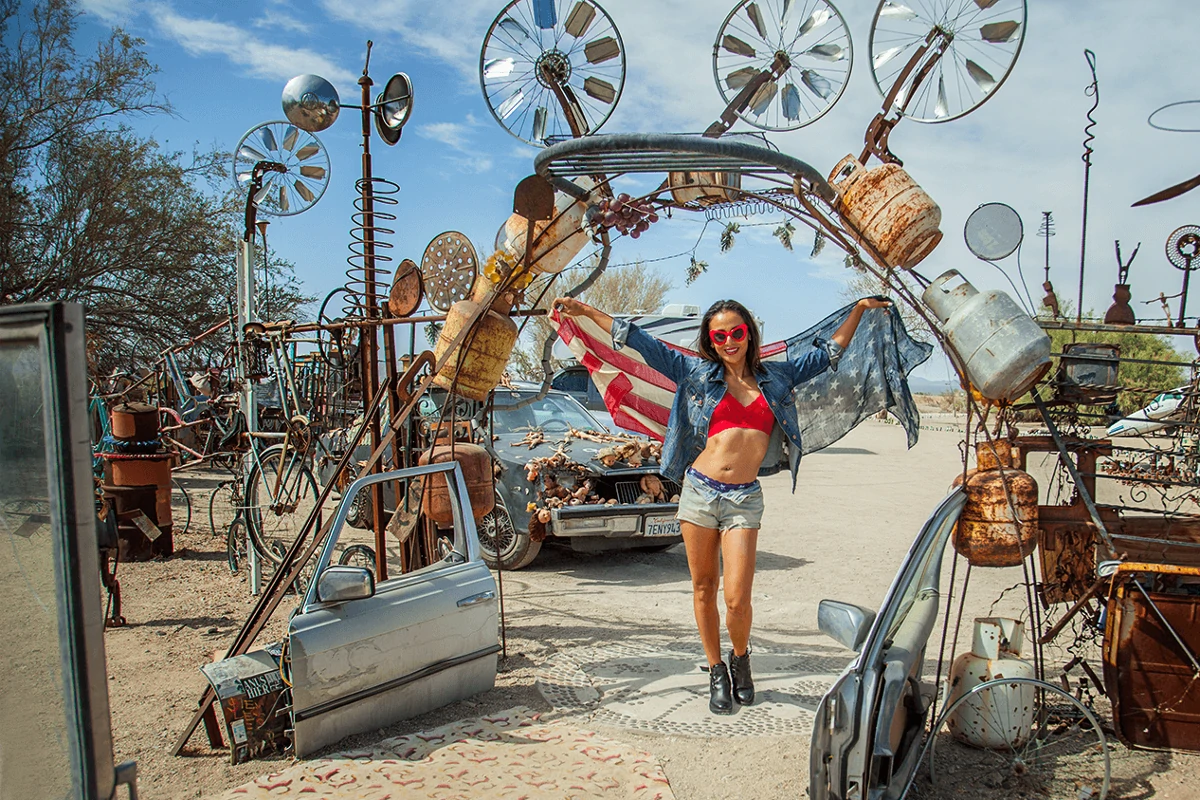
What is Slab City?
Nestled in the unforgiving landscape of California’s Sonoran Desert, Slab City stands as a testament to both the enduring allure of absolute freedom and the complexities of living on the fringes of society.
This off-grid community, often dubbed “the last free place in America,” operates without traditional infrastructure like electricity, running water, or a formal government.
Its residents, a motley mix of snowbirds, artists, survivalists, and those seeking refuge from societal norms, choose to build their lives amidst the stark beauty and challenges of the desert.
To some, Slab City represents the pinnacle of self-determination – a place where rules and regulations fade against the backdrop of boundless desert horizons. For others, it’s a stark reminder of the tradeoffs that come with choosing a life outside the conventional world.
A Brief History of Slab City
The story of Slab City begins in World War II with the establishment of Camp Dunlap, a Marine Corps training base. When the base was decommissioned in the 1950s, the buildings were removed, leaving behind only the concrete slabs that gave this unique community its name.
Over time, a trickle of RVers, campers, and those seeking a life away from the mainstream started to settle on these abandoned slabs. What began as a temporary stop for some became a permanent home for others.
The population of Slab City fluctuates seasonally, with snowbirds flocking to its mild winter weather and those seeking a sense of community and alternative lifestyle finding a longer-term home in the desert.
Dr. Laura Harkewicz Expert Opinion
“Slab City is a fascinating microcosm of society, a place where the desire for independence, both individual and communal, is paramount. It challenges our conventional notions of what a ‘city’ or a ‘town’ should be.” – Dr. Laura Harkewicz, Cultural Anthropologist specializing in off-grid communities.
Life in Slab City
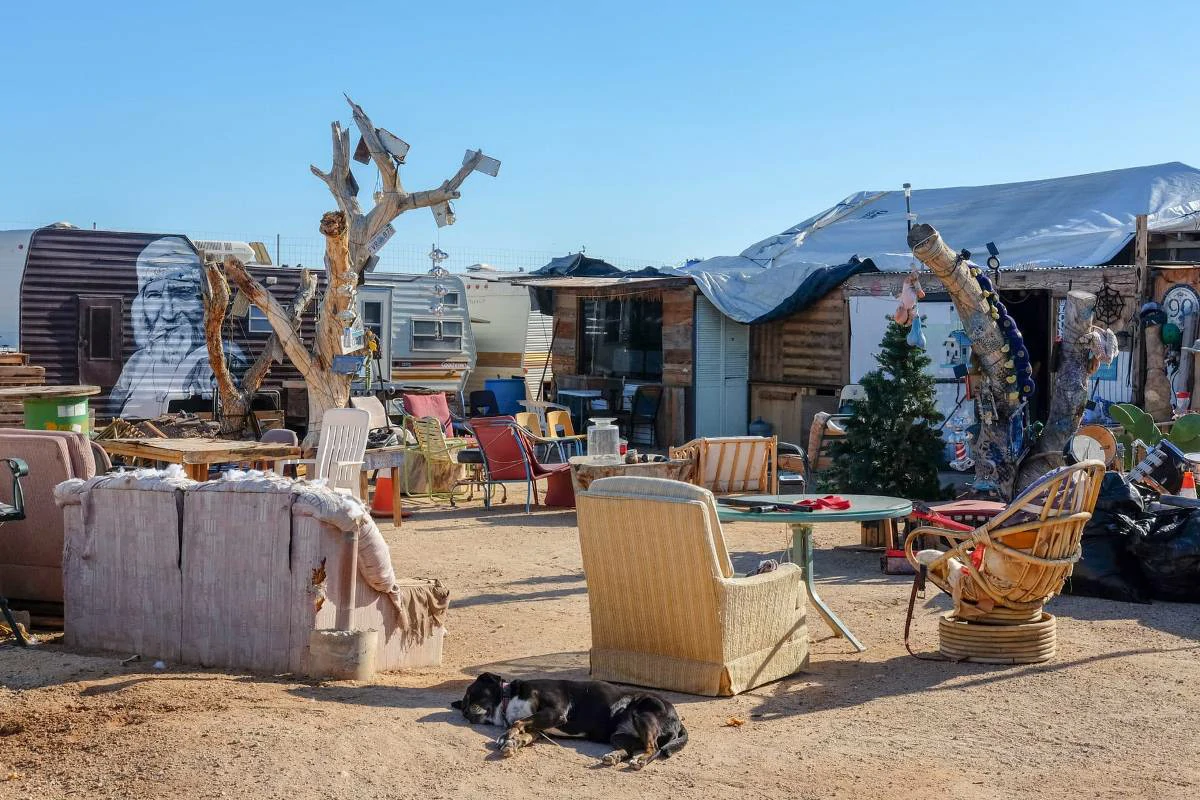
Slab City isn’t just a place; it’s a patchwork collection of lives and stories woven together by the threads of self-determination and a shared desire to live outside the lines. To truly understand Slab City, we need to understand its residents:
1. The Residents
Snowbirds
For many retirees, Slab City represents a warm and affordable winter haven. Escaping the higher costs and colder climates of their home states, snowbirds arrive with their RVs and campers, establishing seasonal camps and forging temporary communities within the larger Slab City landscape.
They bring with them a sense of practicality and often contribute their skills to maintain the informal infrastructure of Slab City.
Artists and Creatives
The stark desert landscape and boundless sense of possibility attract a vibrant community of artists. From painters and sculptors to musicians and writers, Slab City offers an open canvas for self-expression.
Found objects become art installations, the desert silence inspires musical compositions, and the unique social dynamics fuel literary works.
Notable attractions like Salvation Mountain and East Jesus, a sprawling outdoor art installation, are testaments to the creative spirit that thrives in Slab City.
Survivalists and Off-Gridders
For some, Slab City represents a chance to test their survival skills and live completely off the grid.
They embrace the challenges of desert life, with skills in water harvesting, solar power, and resourceful living becoming essential for daily existence.
These residents often possess a deep knowledge of desert ecology and contribute to the community’s resilience.
Those Seeking Economic Refuge
Slab City, with its complete lack of rent or property taxes, provides a lifeline for those facing financial hardship.
Individuals down on their luck, escaping difficult circumstances, or simply seeking an incredibly low-cost lifestyle may find a degree of respite within the Slabs.
The economic reality of Slab City means that resourcefulness and a strong barter system often become essential in day-to-day living.
Professor William Casey Expert Opinion
“The diversity of Slab City’s residents is one of its most remarkable features. You have individuals from all walks of life converging in this desert space, each with their own reasons for being there. It creates a unique social dynamic where acceptance and mutual support often outweigh differences.” – Professor William Casey, Sociologist, University of California, Riverside.
2. Daily Life and Challenges
Life in Slab City isn’t a postcard-perfect desert adventure. It’s a gritty commitment to self-sufficiency, where adaptability and resilience are key for survival. Residents face a unique set of daily challenges:
Water and Sanitation
With no running water or sewage systems, Slab City residents must be incredibly resourceful with these essential necessities.
Water is often hauled in from nearby towns or obtained from limited community wells. Sanitation relies on makeshift systems like outhouses, composting toilets, or the use of RV holding tanks.
Maintaining hygiene and preventing the spread of disease in this environment requires extra diligence.
Extreme Weather
The Sonoran Desert is known for its harsh extremes. Summer temperatures routinely soar above 100 degrees Fahrenheit (38 degrees Celsius), pushing the limits of human endurance.
Residents without air-conditioned RVs or trailers resort to shade structures, evaporative cooling methods, and the occasional exodus to cooler climates during the most brutal months.
Winters, while milder, can still bring freezing nights, requiring proper shelter and warm clothing.
Safety and Security
As with any off-grid community, safety and security rely heavily on self-policing and a strong sense of community vigilance.
Slab City generally maintains a peaceful atmosphere, but incidents of petty theft, property disputes, and occasional violent crime do occur.
Residents must be aware of their surroundings and take measures to protect themselves and their belongings.
Dr. Emily Thomas Expert Opinion
“Life in Slab City demands a certain level of grit and preparedness. Residents understand that they are their own first line of defense in terms of health, safety, and resource management. There’s a strong emphasis on looking out for one another, but self-reliance is paramount.” – Dr. Emily Thomas, Anthropologist specializing in off-grid living.
3. Community and Culture
Despite its off-grid nature and stark landscape, Slab City possesses a surprisingly strong sense of community. It’s a place forged on shared values of self-reliance, acceptance, and often a shared skepticism of societal norms. Here’s a look at what makes Slab City unique:
The Spirit of Freedom
Above all, Slab City embodies an unwavering spirit of individual freedom. It’s a place where people reject societal expectations, carve out their own rules, and define success on their own terms.
This sense of freedom manifests in daily life, from eclectic living arrangements to uninhibited expressions of personal identity.
Art and Self-Expression
Slab City is a canvas for uninhibited creativity. From the monumental folk art of Salvation Mountain to the whimsical assemblages of East Jesus, and countless smaller expressions, art is a defining feature of the Slabs.
For many residents, creative expression is not just a hobby but a way to process their experiences, connect with others, and give meaning to their lives in the vast desert expanse.
Slab City Institutions (The Library, Internet Cafe, etc.)
Even amidst its ‘anything goes’ spirit, certain elements of community infrastructure have emerged organically in Slab City. These informal institutions serve as gathering spots and hubs of information:
- The Library: The Slab City Library is a testament to the power of shared knowledge. Donated books and media create a resource that exists completely off the grid.
- The Internet Cafe: A small establishment where residents and visitors can access the internet, providing a vital connection to the outside world.
- The Range: This open-air stage and gathering place is the heart of Slab City’s entertainment scene. Impromptu concerts, talent shows, and community events bring residents together.
Janet Keller Expert Opinion
“Slab City may seem chaotic to outsiders, but it possesses its own internal order. What binds it together isn’t formal rule or law, but shared values and a sense of collective responsibility borne out of necessity.” – Janet Keller, Ph.D., Cultural Anthropologist
The Draw of Slab City
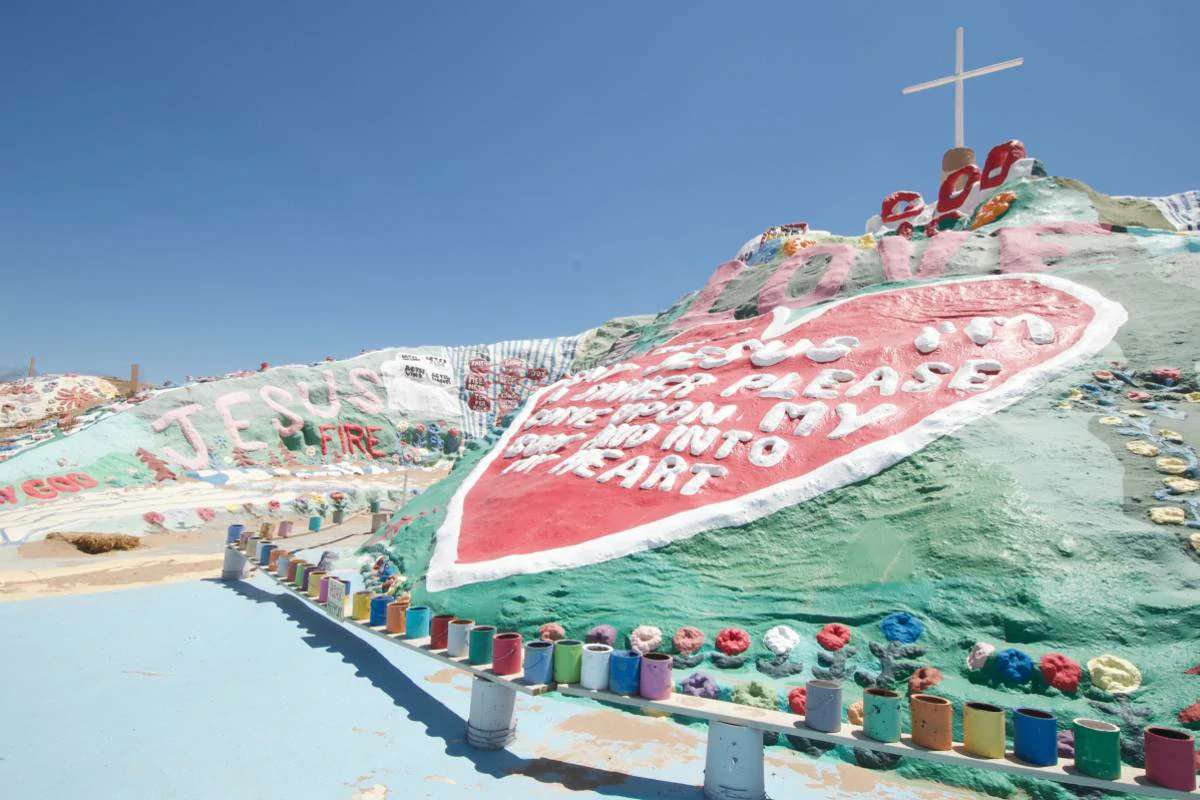
1. Why People Choose Slab City
Slab City’s allure lies in the unique combination of freedoms and opportunities it offers – freedoms rarely found in such stark abundance within modern society. Here’s a breakdown of some of the primary reasons people are drawn to the Slabs:
Escape from Societal Norms
For some, Slab City represents a chance to break free from the perceived confines of mainstream society.
It’s a place where expectations, whether those related to career paths, housing arrangements, or even social conventions, lose their stranglehold.
Individuals can express themselves authentically, even if their choices fall outside the norm, without judgment.
Affordable Living (or Free Living)
The lack of rent, utilities, or property taxes makes Slab City an incredibly low-cost place to live.
For those on a limited income, seeking financial independence, or rejecting materialism, the Slabs offer a lifeline.
Bartering for goods and services, resourcefulness, and a minimalist mindset are crucial for survival when living off the land and off the grid.
A Place of Acceptance
Slab City boasts a sense of radical acceptance that can be hard to find elsewhere. Eccentricities are embraced, and past histories aren’t always a barrier to belonging.
It’s a place where people escaping troubled pasts, misfits, and those simply seeking a more open-minded community can often find a place to start anew.
Creative Inspiration
The limitless desert sky, the raw beauty of the landscape, and the unconventional social environment can spark a unique brand of creativity.
For artists, writers, and those who find inspiration in the unconventional, Slab City provides both a departure point from the familiar and the space to craft something entirely new.
Dr. Michael DeValve Expert Opinion
“Slab City acts as a magnet for those who feel stifled by the constraints of traditional society. It’s not about escaping responsibility altogether, but about defining responsibility and success on their own terms.” – Dr. Michael DeValve, Sociologist, specializing in alternative communities
Slab City Controversies
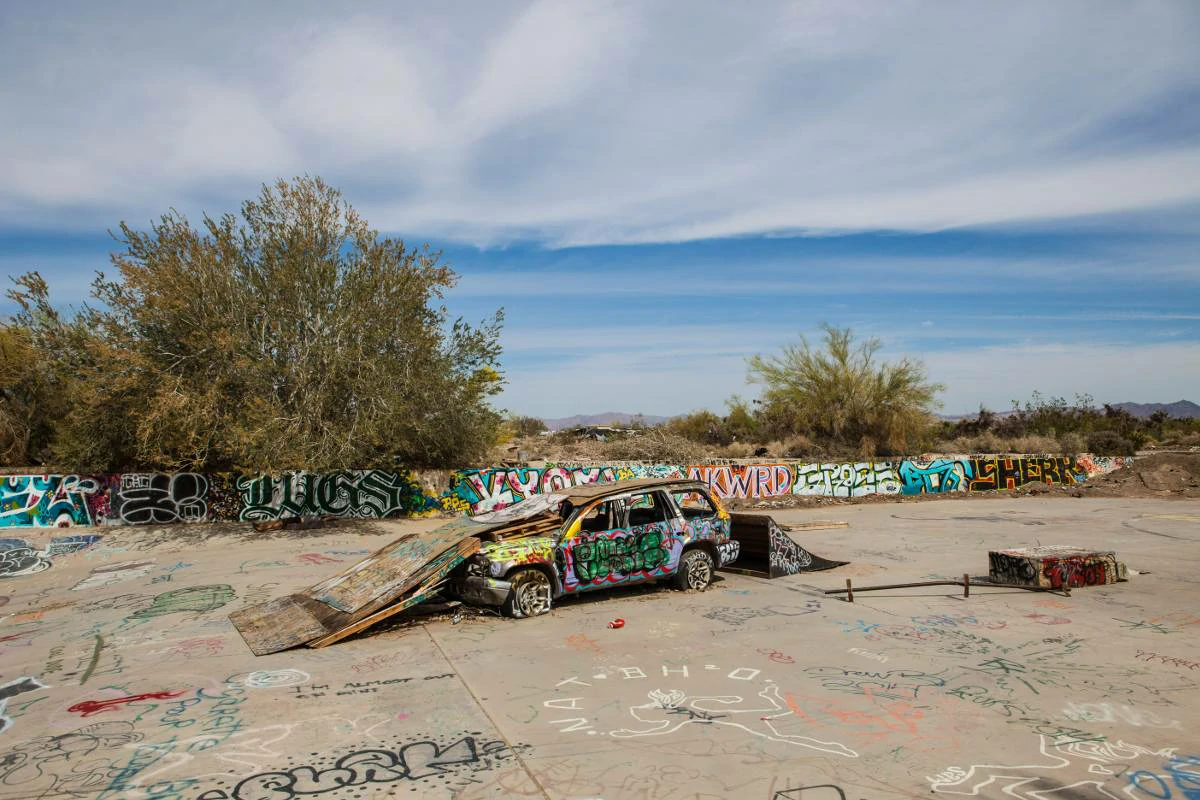
1. Lawlessness and Crime
Slab City’s autonomous nature has, at times, fostered a reputation for lawlessness.
With no formal law enforcement, residents largely rely on self-policing and conflict resolution, raising concerns about how serious crimes are addressed.
Drug use, property disputes, and occasional violent offenses create a complicated picture where safety can sometimes feel uncertain.
2. Environmental Concerns
The impact of a semi-permanent population on the fragile desert ecosystem is a valid concern.
Waste disposal, makeshift sanitation systems, and the use of off-road vehicles raise questions about Slab City’s environmental footprint.
Efforts within the community toward responsible living exist, but their effectiveness is often debated.
3. The Future of Slab City
The land on which Slab City rests is owned by the state of California, creating a lingering uncertainty about its long-term fate.
There are ongoing discussions about potentially selling the land to developers, which would disrupt the established off-grid community.
The potential for change casts a shadow over Slab City, creating tension between residents and those who view the land as an untapped resource.
Dr. Sarah Moser Expert Opinion
“The controversies surrounding Slab City reflect larger societal questions about the balance between individual freedom and collective responsibility. How much autonomy should a community have, and what are the tradeoffs when they exist outside traditional systems of governance and regulation?” – Dr. Sarah Moser, Political Scientist.
Conclusion
Slab City, California is a paradox. It stands as both a testament to the enduring human desire for self-determination and a stark reminder of the tradeoffs that come with choosing a life unshackled by society’s norms. It’s a place of both vibrant creativity and harsh realities, where individual freedom and community interdependence exist in a sometimes uneasy balance.
Is Slab City for everyone? Absolutely not. The challenges of desert life, lack of amenities, and the occasional risks to safety require a specific kind of resilience and resourcefulness. Yet, for those drawn to its boundless freedoms, sense of community, and status as an outsider haven, Slab City offers an unvarnished alternative to the traditional path.
What Does Slab City Mean for Modern Society?
Slab City forces us to ask difficult questions about our values and priorities. It compels us to consider:
- The Limits of Individual Freedom: Where do we draw the line between personal liberty and the needs of a functioning society?
- The Price of Nonconformity: What are people willing to sacrifice or endure to live according to their own rules?
- The Importance of Community: How much can, and should, a community function through self-governance?
Whether viewed as a bold social experiment, a last bastion of self-reliance, or a cautionary tale, Slab City holds a unique place in the American landscape.
FAQs
Is it safe to visit Slab City?
Generally, most visitors to Slab City have positive experiences. However, it’s crucial to be aware of your surroundings, exercise caution, and always come prepared.
Is Slab City legal?
While its existence is tolerated on state-owned land, there’s no formal recognition of Slab City as a town. Living there is a lifestyle choice, not a legally prescribed one.
What’s the best time to visit Slab City?
The winter months offer the mildest temperatures and see an influx of snowbirds, adding to the community’s vibrancy.
Can I stay overnight in Slab City?
Informal camping spots exist throughout the Slabs. For those with RVs, some longer-term sites are available with basic amenities.
Are there resources for those considering a move to Slab City?
Several online forums and websites compiled by long-term residents offer practical advice and insights into the Slab City lifestyle.





